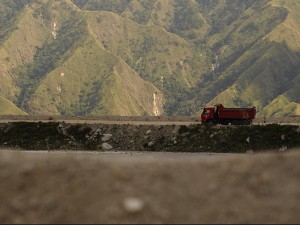Miners air anxiety over proposed bill

Mining companies have expressed their uneasiness over a proposed bill of the interagency Mining Industry Coordinating Council, under which the government will receive a 10-percent share in the industry’s gross sale, or 55 percent of the adjusted net mining revenue, plus a share in windfall profit, whichever is higher. INQUIRER FILE PHOTO
MANILA, Philippines–Mining companies in the country have expressed their uneasiness over a proposed bill of the interagency Mining Industry Coordinating Council, under which the government will receive a 10-percent share in the industry’s gross sale, or 55 percent of the adjusted net mining revenue, plus a share in windfall profit, whichever is higher.
This is on top of national and local taxes including real property tax, value-added tax, capital gains tax, stock transaction tax, documentary stamp tax and withholding tax on passive income, as well as regulatory fees and charges.
According to data from the Asian Development Bank’s Office of Regional Economic Integration, the industry’s contribution to the Philippines’ annual tax revenue was only 0.9 percent.
In comparison, its counterpart in Thailand puts in 6.9 percent; in Vietnam, 18.3 percent; and in Malaysia, 22.5 percent.
Ramon L. Clarete, an economics professor at the University of the Philippines, said that the country’s current mining tax regime already has an average effective tax rate for all three metals—copper, gold and nickel—that is higher than that of other countries.
“The proposed MICC bill raises the AETR [average effecting tax rate] on mining [by a range of] 16 percent to 81 percent,” Clarete said in a presentation at the Mining Philippines 2014 Conference held at the Sofitel Philippine Plaza. “Because investments are negatively correlated with AETR, [the investments] may decline [by a range of] 13 percent to 67 percent.”
Julian Payne, president of the Canadian Chamber of Commerce in the Philippines (CanCham), said such increases would mean that the Philippines would be “totally uncompetitive” when compared with other emerging economies such as Chile and Papua New Guinea.
Payne said that, in those two countries, mining was also financially and politically risky, but a lower AETR countered the impact of such risks.
“It also means that the Philippines will be uncompetitive with mining in Australia and Canada, where the financial and political risk is much less than in the Philippines and the AETR lower,” Payne added. “[The MICC proposal] is the best example I have seen of a proposal that is contrary to what is required to be resilient in adjusting to a changing environment. It moves the Philippines to a worse position as it would block foreign investments … and not generate additional revenues.”
On the other hand, Benjamin E. Diokno, a former budget secretary and a UP economics professor, said the miners “have missed the boat” in as far as marshalling crucial changes that affect the industry.
“By experience, the best time to make proposals and win the support of Malacañang is during the first few weeks of a new President, which won’t come until 2016,” Diokno said. “So my advice to you is to use the intervening time to draw up a good roadmap and to help choose a President who can be your champion.”
To resolve the impasse, the Chamber of Mines of the Philippines is hunkering down to draw up a roadmap for the domestic mineral industry.
Chamber president Benjamin Philip G. Romualdez has asked various experts, many from the academe, to help in preparing an industry strategy that may be presented to Malacañang for discussion.
